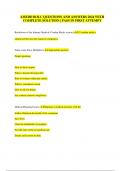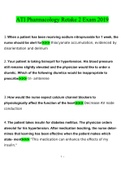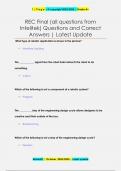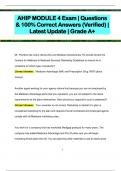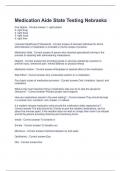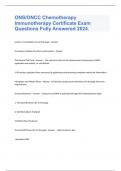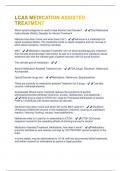Exam (elaborations)
Updated Final Exam Dysrhythmia 2024 Review Questions and Answers 100% Pass | Graded A+
- Course
- Dysrhythmia Training
- Institution
- The Ohio State University
Updated Final Exam Dysrhythmia 2024 Review Questions and Answers 100% Pass | Graded A+
[Show more]




